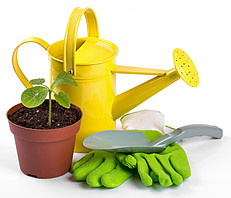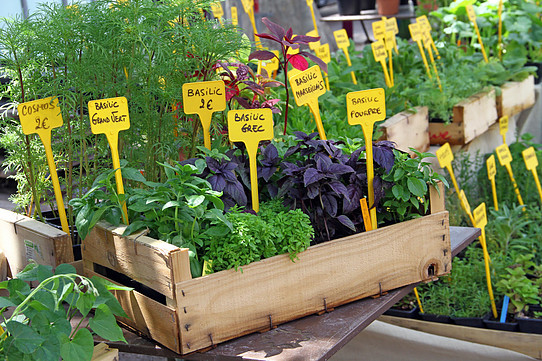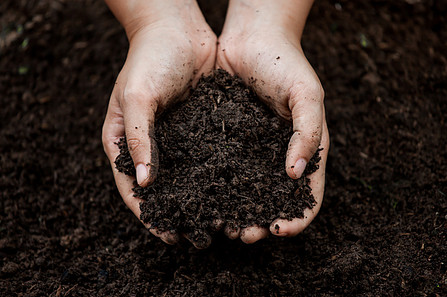Creating a garden plan can be simple
If you’re planning a to plant a garden, creating a garden plan can help to focus on what you want and what works best. It can be as simple or as complex as you choose saving you time, work and money to provide a more enjoyable, more productive garden. Your plan can act as a map to follow, creating a vision of what you would like to end up with. It also helps you decide how much work you want to put into it. You want to make gardening easy, enjoyable and rewarding. Ready to Start?

How to begin a garden – Where do you start?
I start planning my garden as the seed catalogs begin arriving in January and usually order my seeds by the end of January or early February. In my growing zone I like to plant seeds indoors around March first. This is 8 to 10 weeks before last frost in my area. I may start some perennials a little earlier to get flowers the first season.
Don’t overwhelm yourself. Begin by making a list of what you think you would like to grow. Then look at the growing requirements, space and amount of work you want to put into it. Seed catalogs by mail or online are great resources of information to help with this. Adjust your list until it fits your gardening needs.
Your garden may be as small as a few planted containers on the patio or a big garden supplying all your own vegetables and more. Planning may be as simple as a few notes on scratch paper to full scale diagrams. Most of us will be somewhere in between.
Think about these things as you work on your plan:
- How much garden do I want – What is the purpose for your garden and how much space is available? Maybe all you want is a few flowers or veggies in containers to enjoy on your patio or in a sunny window. Perhaps you want a large vegetable patch out back for plenty of fresh food to eat. Flowers on the porch or a large landscape bed? How much time and work do you want to put into it? Will you be doing the work or will you have help? Start with whatever you are comfortable with and feels achievable.
- Where will you plant – Avoid places where water collects or the ground stays wet. Well drained, loose rich soil is best. Most garden plants will need at least 6 hours of sunlight each day so avoid areas that have too much shade. But pay attention to the requirements of your specific plant. Each niche around your property will have its own micro climate. That is to say that variations created by walls and other features combined with topography, wind direction and whether it has morning, afternoon or all day sun can make a particular spot better for some plants. Example – I have ferns that don’t do well in the open area of my yard because it gets a lot of wind, but when I plant up next to my house on the eastern side it blocks the west wind and the ferns prefer the morning sun and afternoon shade in the heat of the day.
- Budget – How much do you want to spend. You may have the cost of seeds, soils such as seed starter mix or soil to add to a garden or create a raised bed. Also, consider if you need new tools such as shovels and other hand tools or tillers etc.
- What do you want to grow – What you choose to grow can determine how much space you need and where. Personal preference and experience level can also play into this.
- Structures and features – If you are growing vine plants will you need support such as arbors. Will you need cages for tomatoes? Do you want irrigation or will you water yourself by hand? Are you planting for your landscape? List any features you want to include such as benches, decorative items, stone wall or other border materials.
- Do you have an HOA? Do you need to submit a plan to them? Many HOAs require you to submit a plan before adding garden or landscape features.
- Check before you dig – Make sure you have no underground pipes or wires where you want to plant. If uncertain call the national utility locating line 811 in the U.S. It is a free service.

Designing your garden – What goes where?
Start designing your garden by making a simple drawing on paper of where you want your garden spaces to be. You don’t need to be an artist. Graph paper can help. Be sure to include all features on your plan. Include your house, garage, trees, patios, fences, etc. then fill in where you want your garden or planting areas to be. Note what you want planted there. If you are only planting in one area and already have that picked out you may only need to show how you are arranging your plants within that plot.
If you’re doing a vegetable garden make sure your crops aren’t competing for the same space. For example, carrots planted next to tomatoes are good companions. The carrots need the root zone space and don’t compete for the space above ground occupied by the taller tomato plants. Just make sure the carrots aren’t shaded out .
If soil or landscape space is unavailable you can grow many vegetables in containers. These can be located anywhere convenient such as porches, patios, windows, hanging baskets. I have used everything from window boxes to clay pots to large plastic containers left over from landscape plants and trees. I have even planted in straw bales. All it takes is the proper amount of light, water and growing medium to be successful.
If you are flower gardening choose shorter types of plants for the front of the border and taller ones for the back. If you are going to have perennials and annuals allow space around the perennials to leave their roots undisturbed. Determine the flower heights and colors you want and the length of flowering period. Annuals will typically flower the length of the season while perennials will typically have shorter more specific weeks when they flower. Perennials can be chosen so that one may come into flower as the next one finishes its flowering period to have blooms continuously.
Each area around your home has unique “micro climate” qualities. I try to plan each space I am planting by these qualities. I look at if the space has morning, afternoon or all day sun and if it is the windy side of the house or is sheltered. Up close to the house may provide more protection from the cold of early spring or late autumn or midday summer sun for tender plants.

Choosing the right plants – What to grow in my garden
Choosing the right plants for your garden can bring success in more ways than one. It can help make gardening easier because some plants may have less maintenance through disease resistance or tolerance to conditions in your area. Some plants can help deter pests or provide benefits to companion plants when planted near them in the garden. Also, some plants may have better qualities or flavor that you are looking for that you might not be able to get locally.
When choosing your plants consider these things:
- Are you planting a food garden or a flower garden or both – there are benefits to planting certain flowers in your vegetable garden and companion planting
- Needs of the plant – sun / shade / water requirements / amount of space needed
- Season length / climate zone – For Vegetables you have two groups, cool season and warm season crops. Some will have a longer season needed than others and will need planted earlier and grow longer into the end of the season. Be sure your selections are suited to your climate zone. For flowers, some may flower for only a short time, (usually perennials) while others will flower over a longer period (usually annuals).
- Disease resistance and tolerance to weather conditions – Some varieties that may be prone to certain diseases may be bred to resist them such as tobacco mosaic virus, powdery mildew etc. Other plants may be tolerant of heat or drought to withstand summer dry spells. Your seed catalog can provide a wealth of information on each type of vegetable or flower to compare. Many varieties have multiple tolerances.
- Pests – Lets say you are planting flowers and have a lot of wild animal activity. Deer, rabbits, squirrels and even groundhogs to name a few can ruin a lot in a short time. But certain plants are disliked by them. For example, some salvias grow well in the flower garden but are disliked by animals. I planted Prairie sun flowers one year only to learn it was a ground hog favorite. Finding a different plant to grow in that spot eliminated drawing in the ground hog and I enjoy a garden without lost work from the damage. This can be part experience and part reading up or learning from the neighbors what works best.
- Productivity – some garden varieties may be bred to produce well in limited space if your garden is small. Some may be best for flavor and others to get the most produce over the season. Your seed catalog will note these qualities.

Begin with the right stuff – What is good garden soil made of ?
A word about soil when you are planning your garden. You can’t say enough about it. Soil and dirt are not the same thing. Soil is a mix of organic and inorganic materials, water, minerals, gases and microorganisms that promote and sustain life. In my view dirt is lifeless. It may be sand, silt or clay and may be rocky in nature. It has none of the live organisms or nutrients found in soil. With this in mind look at the condition of your soil. If it better describes dirt than soil or you have low-lying areas that may stay too wet, a raised bed or containers may be a good choice for you. I have a newer built home where the builder stripped all the topsoil away. I have success gardening in a raised bed because all that was left was clay and shale.

Raised beds are limited in size and shape only by your imagination and the materials you have to build them. I have used wood, stone, straw bales and even created mounds by piling up mulch along the sides to create my raised beds. Keep in mind it is generally best to keep them narrow so you can reach your garden plants them without stepping into the bed. Raised beds or containers are a good solution to poor soil or site problems and take less work to control weeds and maintain your garden.

Conclusion
Creating a garden plan can be simple and fun. It puts you in charge of creating your world around you and can save time and expense. You can use this checklist to track what you need to do and show you what progress you have made.
□ List what I would like to grow – check plant needs and growing zone
□ How much space do I need and where will I plant – create diagram if needed
□ How much time will it take, when will it be done and who will do it
□ Budget – include cost of seeds/plants, tools, soil mixes if adding to garden or containers, and any features/structures
□ Do you need HOA approval or call before you dig to assure no underground lines
□ Final plan – choose what to keep on your list and what to eliminate based on all the previous questions
You should end up with your working list of what you are going to grow and have your drawing or notes on where you are going to plant your garden or gardens. Note that if you want a specific variety you may want to order seeds early or get your plants from the local garden store soon after they are available. Sometimes specific varieties will sell out quickly and may become unavailable until after the time you need to plant seeds or until the next season. I can’t wait to get growing. Can You!

I hope you have enjoyed todays post on creating a garden plan and it has helped you to get ready for the growing season in your next garden. If you have any comments or questions please leave them in the comment section below. If you like todays post please share it. Happy gardening !